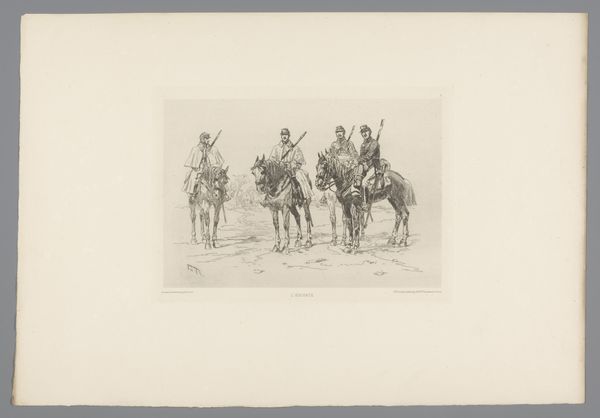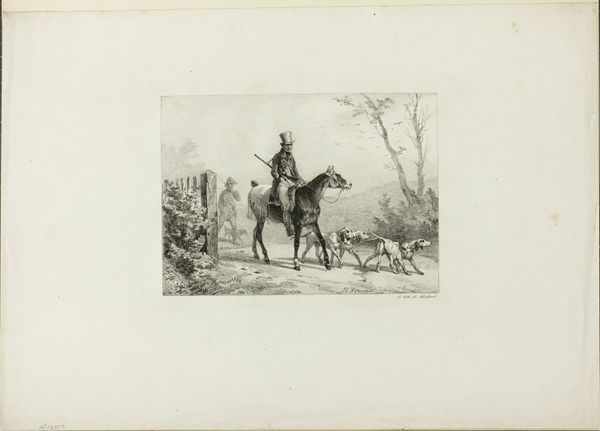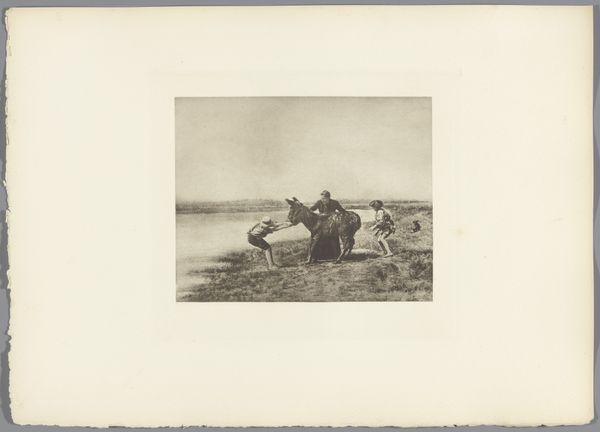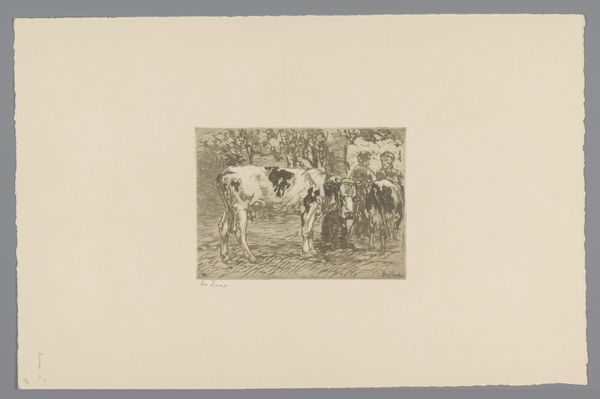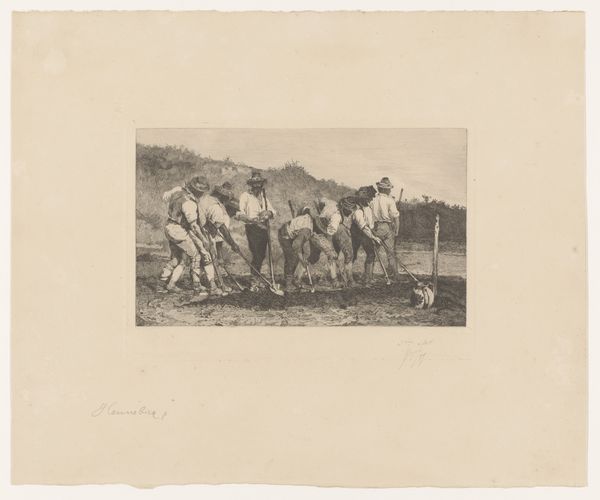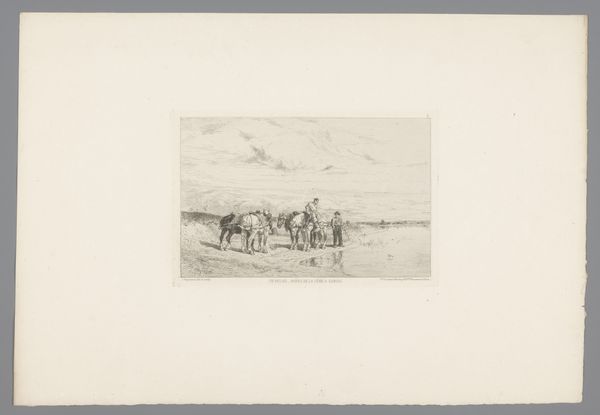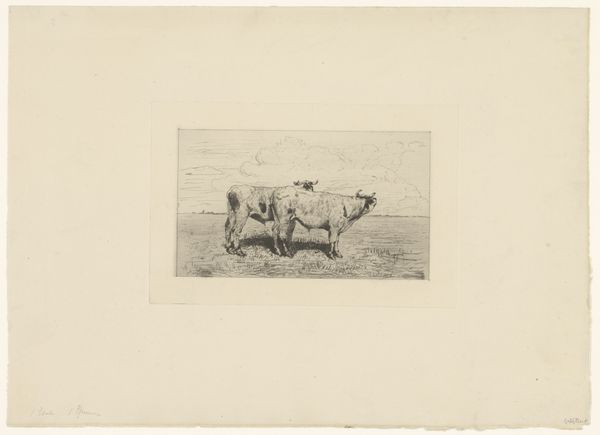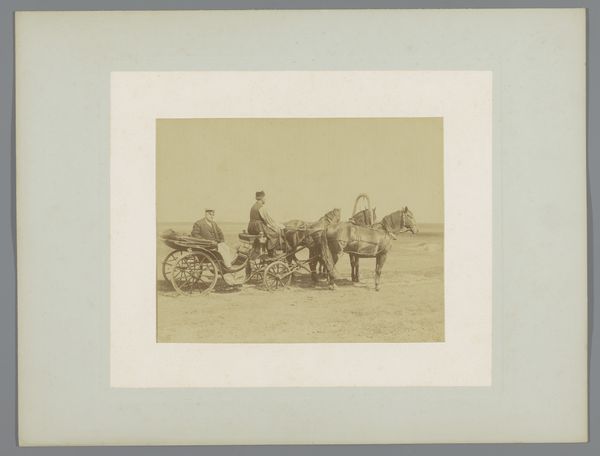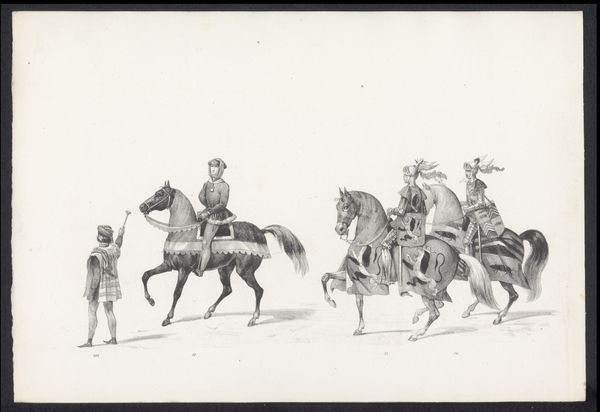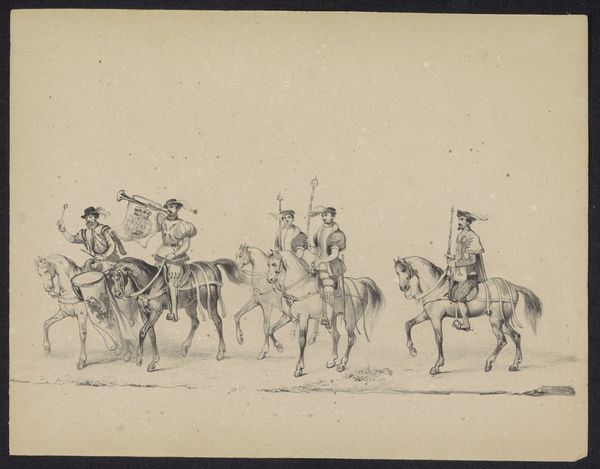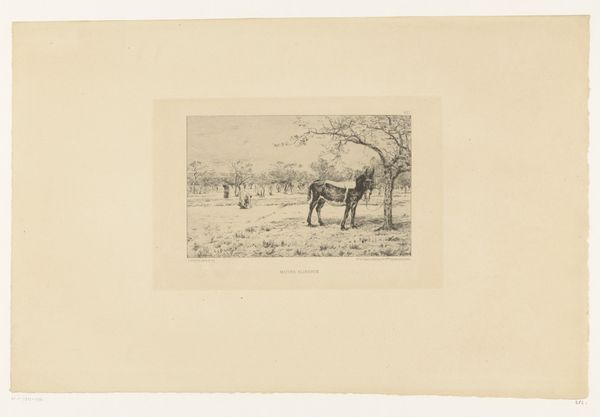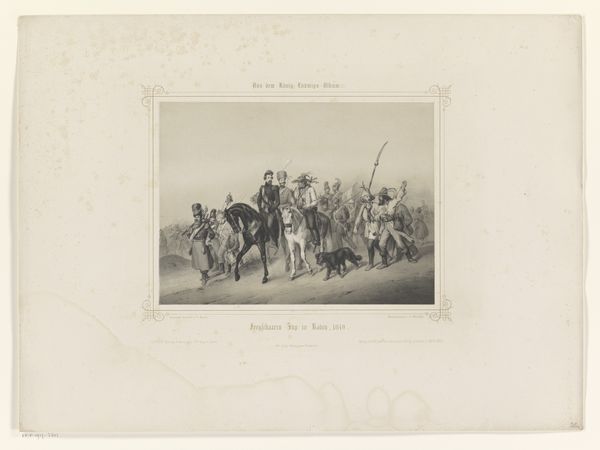
drawing, graphite
#
portrait
#
drawing
#
pencil sketch
#
landscape
#
figuration
#
horse
#
graphite
#
watercolour illustration
#
history-painting
Dimensions: height 116 mm, width 273 mm
Copyright: Rijks Museum: Open Domain
Curator: Right, let’s take a look at this intriguing work titled, "Sneeuwlandschap met stoet van soldaten en paarden," or, "Snow Landscape with a Procession of Soldiers and Horses." It’s attributed to Marcel Roux and dates roughly between 1900 and 1922. Editor: Bleak, isn’t it? Utterly desolate. All that grey and white just seems to swallow everything whole. The poor horse looks utterly defeated, its head hung low like it's questioning every decision it ever made. Curator: The historical context here is crucial. Consider the period – late 19th, early 20th century Europe. The rise of nationalism, militarism... The portrayal of soldiers, even in transit, invokes broader questions about power, obedience, and the human cost of conflict. How are such themes represented, you think, in the body language of the horse? Editor: The horse... yes, it really hits me. I can't help but personify it, you know? That slouch, the weary legs—it speaks volumes about the drudgery of war, perhaps? The way its posture mirrors the supposed glories of the troops, almost undermining that narrative completely. Curator: Absolutely. The contrast is telling. What seems like a portrait of strength and force from afar disintegrates on closer inspection. The materials, graphite and pencil, contribute to that effect; the fragility of the medium mirroring the impermanence of power, wouldn't you say? The very use of these simple drawing tools suggests a rejection of grandiose historical painting. Editor: Exactly! It feels almost like a whisper of rebellion against those heroic battle scenes. This is the grim reality, the artist seems to be saying. The exhaustion, the silence, the... oh god, the boredom. Think of the horse's boredom! A long journey... Perhaps this speaks of how art gives a voice, maybe even a body, to experiences sidelined by traditional representations of conflict. Curator: Precisely. A commentary on whose stories are privileged, whose perspectives are valued... Considering Roux’s other works, it fits within a broader narrative of questioning dominant power structures and revealing their impact on both people and... animals. The procession is not grand or victorious, but heavy and burdensome. Editor: So well put. I just keep coming back to that horse. A metaphor, really, for all the unspoken sacrifices history conveniently overlooks. Makes you think. Curator: It does indeed. A poignant reflection on history, humanity, and the enduring weight of power. Editor: I am now contemplating an oatcake for some reason, but mostly just feeling the deep fatigue this evokes, this snapshot.
Comments
No comments
Be the first to comment and join the conversation on the ultimate creative platform.
